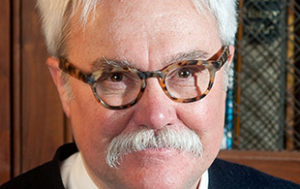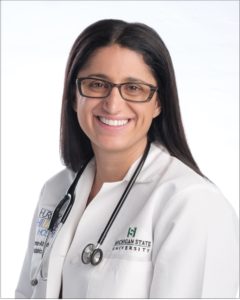A New Traveling Companion at the Talbot County Free Library
The Star-Democrat, October 6, 2019
by Bill Peak
*****
As we read a book, find ourselves drawn into its story, there’s always a shadow character who rides along with us, the only person in the book that, in a sense, we create all by ourselves. It is the author, or the author we imagine based upon the sort of story he or she has chosen to tell, his or her picture at the back of the book.

Once, when I was a little boy, I went on a long train trip with my parents. I can’t remember where we were going, but a train trip was a rare adventure in those days and I remember being fascinated by the fold-out sink in the compartment my parents had reserved for us, the tiny night-light which, when I toggled its metal switch on, produced a magical-looking, faintly purple light.
As we travelled and the day outside our window began to fade into night, I remember the enchantment of our berth, the rhythmic clacking of the train’s wheels, slowly giving way to an entirely different world, a place where little boys like me got to fish and play hooky and even, incredibly, smoke real pipes. My mother was reading aloud to us from “The Adventures of Huckleberry Finn,” and as she read, a man in a white linen suit, smoking a big Cuban cigar, slowly materialized on the button-cloth upholstery of the seat across from me. He glanced down at me, winked as though we had shared a joke, and then, looking thoughtfully up at the ceiling, expelled a long, fragrant cloud of smoke into our little roomette.
After Samuel Clemens, a progression of authors came and went through my life, mostly Kentuckians, Jesse Stuart, Zachary Frederick Smith, and two irrepressible females, Annie Fellows Johnston of “Little Colonel” fame, and Virginia Cary Hudson, author of the inimitable “O Ye Jigs & Juleps.” Then, in my teens, I fell rather predictably under the spell of Ernest Hemingway. It seemed such a grand way to live, trout-fishing, running with the bulls in Pamplona, writing short stories in clean, well-lighted places. I tried to overlook the women he wounded, the children he abandoned, the shotgun that became his final consolation.
As I matured, Papa fell unregretted by the wayside and I moved on to more worthy luminaries: Shakespeare, C. S. Lewis, James Joyce, John Steinbeck, and yet another Kentuckian, Wendell Berry. Then, perhaps just as predictably—but only after my wife Melissa had been pestering me for years to give her a try—I discovered Virginia Woolf. I’m not going to write much about Ms. Woolf here, saving that for a column I’m planning for next year, but suffice it to say that—with her sad eyes, bedeviled life, and radiant writing—she took up lodgings in a chamber of my heart that, heretofore, had been reserved exclusively for Melissa McLoud. I would do anything to be able to go back in time, save Virginia Woolf from all that beset her, give her a chance to write still more. I really would.

And now, thanks to Maryland Humanities, a new writer has found a place in my affections, the author of this year’s One Maryland One Book, “What the Eyes Don’t See.” One Maryland One Book is the Maryland Humanities program in which people all across the state read the same book at the same time. In “What the Eyes Don’t See”—a book I couldn’t put down—Dr. Hanna-Attisha tells how she took on an array of city and state bureaucrats, all of them intent upon thwarting her, to save the people (and, in particular, the children) of Flint, Michigan, from the lead those same bureaucrats, in an effort to save money, had allowed to poison the city’s water.
Now think about that. Dr. Hanna-Attisha, a brilliant pediatrician, writes a book in which, for all intents and purposes, she ends up being the hero. I’m sure you and I have both known at least one M.D. in our lives who would have been unable to resist the temptation to turn such a tale into a self-aggrandizing bore. But the Dr. Hanna-Attisha we meet in “What the Eyes Don’t See” is another kind of doctor altogether, a fragile, eminently human physician who—despite all her self-doubts and uncertainty—takes her responsibility to protect her tiny charges so seriously, it propels her to greatness.
On Monday, November 4, at 7:00 p.m., in the Todd Performing Arts Center at Chesapeake College, Dr. Hanna-Attisha will discuss “What the Eyes Don’t See” (her presentation followed by a book sale and signing). Dr. Hanna-Attisha’s appearance, which is free and open to the public, is made possible by Maryland Humanities, the Talbot County Free Library, the Caroline County Public Library, and the Queen Anne’s County Public Library. For me, it offers an opportunity as rare as that childhood train trip: I am going to meet an author whom, through the vehicle of her writing, the story she tells, I have come to love. I hope to see you there as well.

